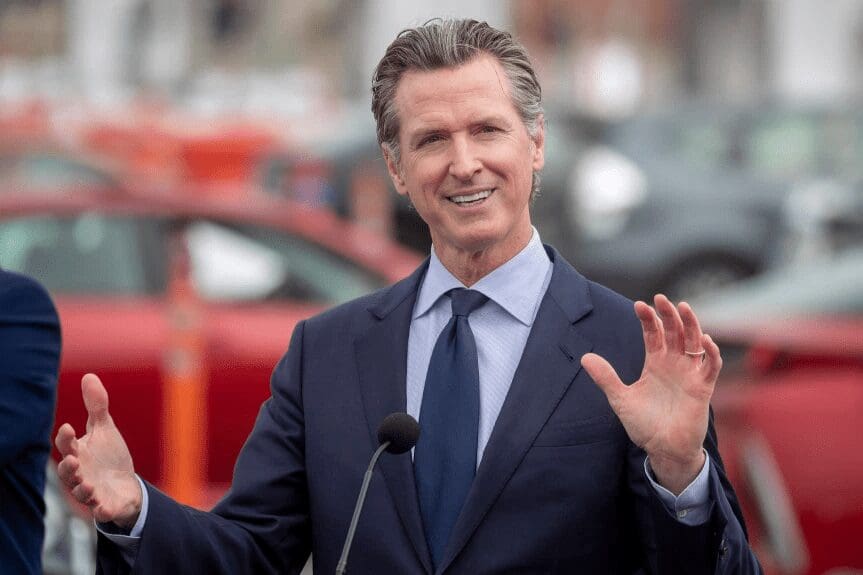The middle class and low-income Californians are expected to benefit from UBI
By: MAGGIE ANGST
Gov. Gavin Newsom today unveiled plans to deliver a second round of $600 stimulus checks — this time for middle-class residents in addition to low-income families — in an effort to speed up California’s recovery from the COVID-19 pandemic.
The governor’s proposal to award two-thirds of Californians with stimulus checks is part of his $100-billion “California Comeback Plan,” which stems from an unprecedented $75.7 billion surplus in the state’s general fund projected for the upcoming fiscal year and an additional $26 billion from the federal coronavirus relief package.
As part of the plan, Newsom intends to give $600 payments to taxpayers earning up to $75,000 in adjusted gross income and an additional $500 to families with dependent children, including undocumented families.
He has also proposed spending $5.2 billion on rental assistance with the goal of getting 100% of back rent paid for Californians directly affected by COVID-19 and $2 billion in direct payments to help Californians pay off overdue water, gas and electricity bills.
“This is all on the basis of the recovery that California is already experiencing,” Newsom said during a news briefing Monday. “And that’s because we are defeating and we are successfully applying strategies to address this pandemic.
“…California is not just coming back, it’s roaring back.”
If approved by the state Legislature, the new stimulus package would triple the size of the Golden State Stimulus package that Newsom signed into law in February — bringing the total funding to $11.9 billion.
The first round of stimulus payments provided $600 checks for 5.7 million low-income Californians and grants to small businesses. Those who received the first payment will not be eligible for a second.
The Legislature has until June 15 to pass the state budget, so the proposed payments would likely be distributed sometime this summer.
The governor’s announcement comes just two weeks after a Republican-led campaign to recall him from office qualified for the ballot and just days before he is due to submit his revised proposal for a state budget bolstered by the significant funding surplus.
At least one candidate looking to oust Newsom from office quickly took the opportunity to throw jabs at the governor.
“Instead of making beastly, structural changes and slashing taxes permanently, pretty boy Gavin Newsom is making one-time payments to Californians to avoid being recalled,” John Cox said in a statement Monday. “But, Californians can’t be bought. Now is when we should be making big changes that will shake up Sacramento, lower taxes and make California permanently more affordable.”
Full details of the governor’s “California Comeback Plan” will be trickled out over the next few days.
In a Mother’s Day video on Sunday, Newsom debuted another major budget proposal to increase spending for families and caregivers, including funding for 100,000 new state-subsidized child care slots and $200 million for home health care workers.
“We’re going to be making some bold investments, and some big investments, in particular, to support parents,” he said in the video. “We have the backs of mothers and will be making investments to solve real problems and to acknowledge the extraordinary stress that so many moms, particularly working moms, have been under over this last year.”
The state’s projected surplus is so expansive that all California taxpayers are likely to benefit from a future rebate, thanks to a state law put in place to restrict government spending.
The law, approved by voters in 1979, was spearheaded by taxpayer watchdog Paul Gann. It requires the state to provide residents with a tax rebate when revenues outpace spending on taxpayer-funded programs — a provision that has not been triggered since 1986. Roughly half of the money must be spent on K-12 education and half must go back to taxpayers.
State finance officials predicted in January that California would exceed the spending limit by $102 million — a figure that is expected to grow even larger in the final budget. Newsom said the exact dollar amount to be given back to California taxpayers under the Gann limit will be determined over the course of the next year or so.
The realization marks a sharp pivot from last year’s budget process when Newsom and the Legislature took steps to close a projected $54 billion deficit stemming from the coronavirus outbreak.
It turns out that California’s finances were much stronger than projected. The pandemic-fueled recession did not go as deep as state finance officials had anticipated, primarily because wealthy households, which contribute most to state taxes, have prospered as the stock market soared in the midst of the pandemic.
Assemblymember Phil Ting, chair of the Assembly Budget Committee, said this realization has given the state a “historic opportunity” to help those who have suffered the most during the pandemic.
“At a time when people need government the most, often we’re in a situation where we can’t help them,” Ting said at the event in Oakland on Monday. “But because of our progressive tax policy … we have an unprecedented budget surplus and that budget surplus is going right back to the most vulnerable Californians — the ones who need the help the most.”
As of Monday, California had its lowest COVID-19 case rate since the start of the pandemic, and close to half the state has been fully vaccinated. But even though the state is poised to reopen most of its economy by June 15, tens of thousands of Californians are still unemployed and many residents are still struggling to cover their rent and keep up with additional expenses.
Under the governor’s new proposal, landlords could be reimbursed for 100% of an eligible renter’s unpaid rent.
Tom Bannon, chief executive officer of the California Apartment Association, called the announcement “welcome news.”
“We thank the governor for understanding the difficulties that both tenants and rental property owners have endured during the pandemic,” Bannon said in a statement.





















